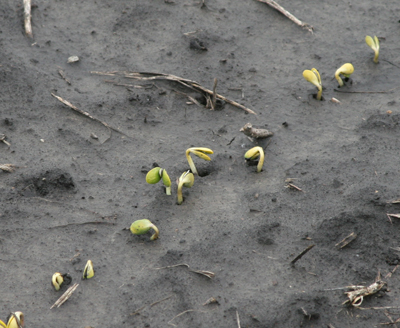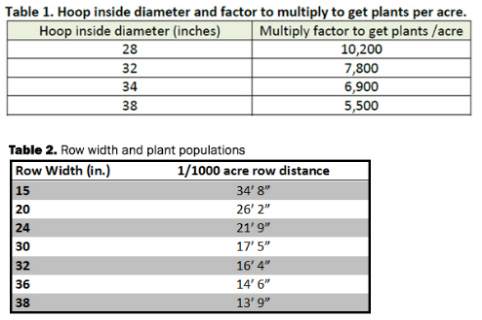
- Soybeans are less affected by planting date than corn.
- Soil temperatures of at least 55°F or greater at a 4” depth and a favorable 10 day forecast is best before planting soybeans.
- Stay with maturities you have chosen to plant, changing can cost you bushels per acre.
- Increased planting population is not necessary until June 1st and later, prior to this date soybeans will compensate in other ways.
- Uniformity of emerged stand is more important than final stand count due to soybeans ability to compensate.
Soybeans are less affected by planting date than corn and for most latitudes they can be planted through the end of May without significant yield penalty. This article will explore the effects of late planting on soybeans, variety maturity and planting date, and tips to maximize yield potential.
Soil temperature is important for soybeans, and soybean planting is generally not advised until the midday 4 inch soil temperature is at least 55°F and a favorable 10 day weather forecast is predicted. When cool wet soils or stressful conditions are expected, use of a fungicide seed treatment is advised to protect against seedling diseases.
Regardless of planting date stay with maturity groups appropriate for your soybean planting zone. Changing to early maturity varieties will most likely cost you bushels per acre. Soybeans mature according to the number of dark hours in a 24 hour period, known as photoperiod sensitivity. Soybeans are triggered to shift growth stages when a certain number of dark hours occur in a 24 hour period. Differences in maturity between varieties has to do with the number of dark hours needed for changes in the soybean lifecycle stages with earlier maturing beans having shorter timespans per lifecycle stage. Vegetative growth, pod set, seed set and full maturity are all triggered by photoperiod. Shorter season varieties growth stages are triggered during shorter dark periods than a fuller season soybean. When planted late, varieties will emerge further than normal into their typical V-stages and this can result in shorter soybeans with fewer nodes and therefore fewer sights for potential pod development. This is why at times late planted soybeans begin flowering at very early vegetative stages. Prior to June 1st soybeans compensate by increasing the number of seeds per pod and the size of seed. Post June 1st this isn’t the case, causing some growers to intervene and increase plant population by 10%. Increasing population is a method to force more plant nodes per acre to compensate those lost on an individual plant basis from the later planting date.
Post emerge at soybean growth stage VC is a great time to check stand. Remember, with soybeans the uniformity of the stand is often more important than the actual plant count per acre. A uniform stand of soybeans can compensate for stand losses as low as 90,000 final stand count. The number of plant counts per field to determine plant population, has less to do with size of field and more to do with the number of soil types present, the topographical variation of the field and the number north versus south slope variations present. In fields with little variation fewer plant counts can be made, whereas in fields with more variation it is important to represent each area of variation in the counts. In rowed soybeans a 1/1000th of acres count suffices for each stop, while in drilled beans utilizing a hoop is the method. In areas where counts are taken do not let the naked eye choose sample areas, toss a small shovel or the hoop randomly, taking stand counts where the object lands. Row width and hoop size determine the length of row to cover or area to count. Table 1 & 2 below provide the information necessary to know the length of row per row width to represent 1000th of an acre or the factors to calculate plants per acre based on hoop size. Record the numbers of 2 foot or greater gaps per count stop in the case of rowed beans.

Replant of soybeans is rarely warranted, however for more concise information regarding replant decisions, click on one of the following links: https://store.extension.iastate.edu/Product/Soybean-Replant-Decisions-PDF https://www.extension.purdue.edu/extmedia/SPS/SPS-104-W.pdf
Table 1: Hoop inside diameter and factor to multiply to get plants per acre. (North Dakota State University, Hans Kandel, Crop & Pest Report, 5-31-12).
Table 2: Row width and plant populations, Adapted from University of Illinois Crop Scouting Manual, 2010.